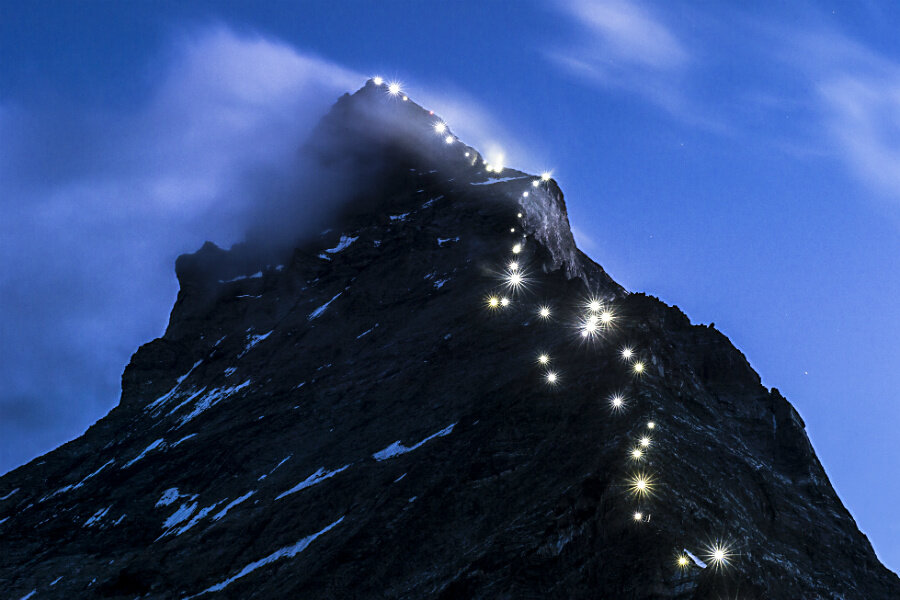Matterhorn @ 150: Why the Swiss closed the mountain
| Berlin
No climbers were allowed on Switzerland's Matterhorn mountain Tuesday, as authorities declared a daylong 'silence' on the 150th anniversary of the first ascent to honor more than 500 climbers who have died trying to reach the top.
A group of seven mountaineers led by Briton Edward Whymper became the first to scale the peak on July 14, 1865. Four members of the team died on the descent.
The solemn silence on the Matterhorn – underlined with the threat of a 5,000 Swiss francs ($5,290) fine – was part of a series of events marking the anniversary, which also included a light display along the route of the original ascent.
Authorities have also taken longer-term steps to calm the crush of mountaineers trying to reach the iconic 4,478-meter (14,692-foot) Alpine peak that Switzerland shares with neighboring Italy. The Hoernlihuette base camp refuge, also reopened Tuesday, has been reduced to 140 beds from 170.
An anniversary ascent by a team of climbers from Britain, France, Italy and Switzerland – reflecting the nationalities on the first ascent – is planned for Friday.
Here's an excerpt from The Manchester Guardian in 1865 that describes what happened:
The party passed the night at the foot of Mont Cervin. On the following day, finding the ascent would be easier than was anticipated, they pushed on and arrived at the summit at two p.m. At three o’clock they were descending the mountain, Croz leading the way, followed by Lord Francis Douglas, Messrs, Haddo, Hudson; and Whymper, and the two Tangevalds, the whole party being connected by the same rope. Lord Francis Douglas happening to slip caused Croz and Messrs. Haddo and Hudson to fall, also Tangevald, the father. The last of the party was able to pass the rope round a rocky projection, but it broke between the rock and the four first, namely, Croz, the guide, Lord F. Douglas, and Messrs. Heddo and Hudson. They rolled down the mountain, and were precipitated from rock to rock to a depth of 4,000 feet. The survivors arrived at Zermatt on the morning of the 15th.






